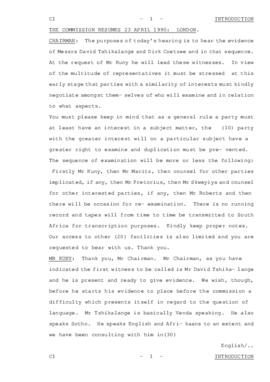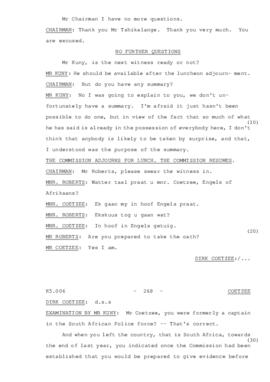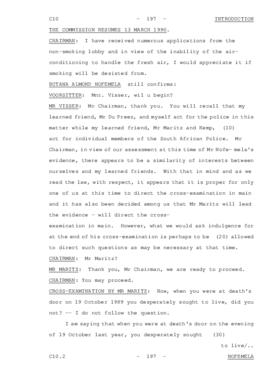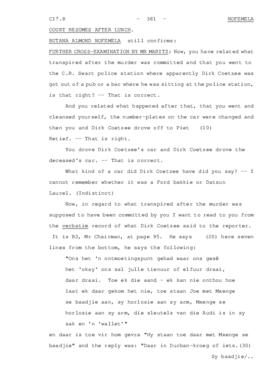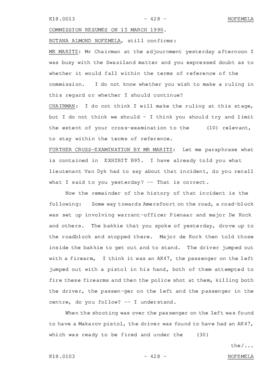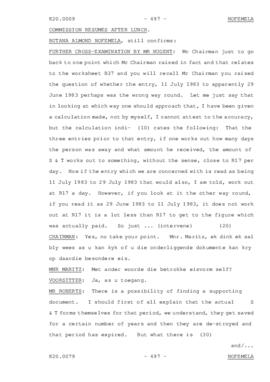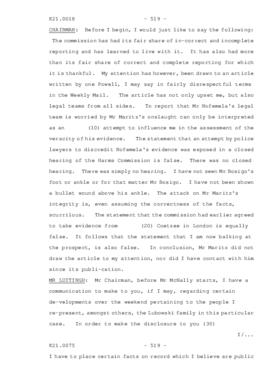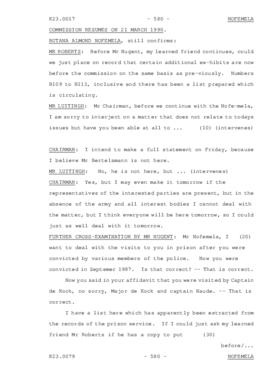Área de identidad
Código de referencia
Título
Fecha(s)
- 1990 (Creación)
Nivel de descripción
Fondo
Volumen y soporte
1 CD, digital format only
Área de contexto
Nombre del productor
Historia administrativa
The Commission of Inquiry into Certain alleged Murders was appointed by the then State FW de Klerk on 2 February 1990, in response to outcries by South African and international human rights groups over allegations by three former police officers in October and November 1989 that they had been members of an officially authorized and funded police death squad. In early 1990, another death squad, the Civil Cooperation Bureau (CCB), sponsored by the South African Defense Forces, was revealed. The allegations presented the de Klerk government with one of its first major domestic crises
However, the Harms Commission suffered from extremely restricted terms of reference that were very strictly applied by Harms and which prevented the investigations to go beyond the borders of the country. Therefore, the Harms Commission was seriously flawed in both design and practice. At the outset, Justice Harms announced that he would limit the inquiry to acts committed within the borders of South Africa, even though many anti-apartheid activists had been assassinated on foreign soil. Government witnesses, some of whom showed up to testify in wigs and other disguises, were not required to produce pertinent documents. The CCB was disbanded in August, but no prosecutions resulted. The Harms Commission report, which was released in September 1990, failed to name any special units of the army or police, let alone any individual officers, as participants in the death squads. The report was denounced by opposition groups as a whitewash.
Institución archivística
Historia archivística
Origen del ingreso o transferencia
Área de contenido y estructura
Alcance y contenido
The records in this collection consist of 2957 pages of evidence heard in South Africa and 960 pages of evidence heard in London.
Valorización, destrucción y programación
Acumulaciones
Sistema de arreglo
Área de condiciones de acceso y uso
Condiciones de acceso
Condiciones
Idioma del material
Escritura del material
Notas sobre las lenguas y escrituras
Características físicas y requisitos técnicos
Instrumentos de descripción
Área de materiales relacionados
Existencia y localización de originales
Existencia y localización de copias
Unidades de descripción relacionadas
Área de notas
Identificador/es alternativo(os)
Puntos de acceso
Puntos de acceso por materia
Puntos de acceso por lugar
Puntos de acceso por autoridad
- Dirk Coetzee (Contribuyente)


